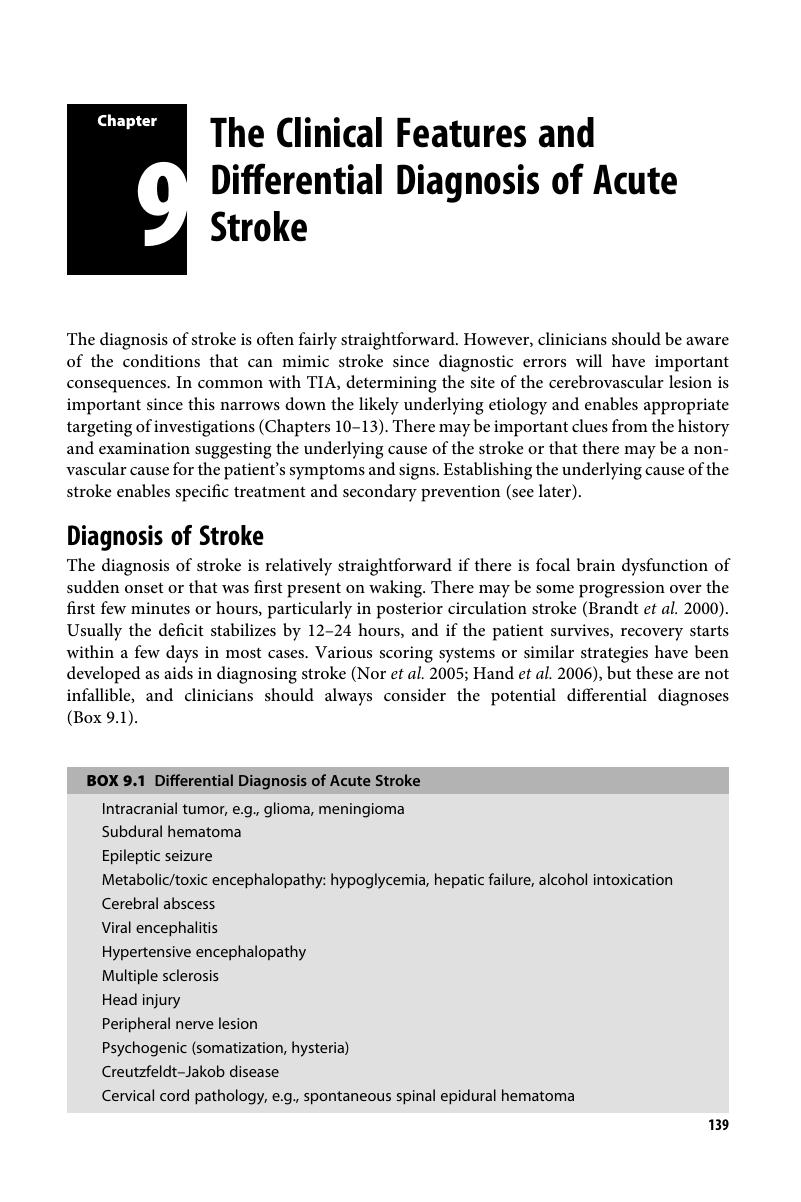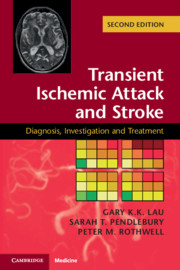Book contents
- Transient Ischemic Attack and Stroke
- Transient Ischemic Attack and Stroke
- Copyright page
- Contents
- Preface to the Second Edition
- Section 1 Epidemiology, Risk Factors, Pathophysiology, and Causes of Transient Ischemic Attacks and Stroke
- Section 2 Clinical Features, Diagnosis, and Investigation
- Chapter 8 Clinical Features and Differential Diagnosis of a Transient Ischemic Attack
- Chapter 9 The Clinical Features and Differential Diagnosis of Acute Stroke
- Chapter 10 Brain Imaging in Transient Ischemic Attack and Minor Stroke
- Chapter 11 Brain Imaging in Major Acute Stroke
- Chapter 12 Vascular Imaging in Transient Ischemic Attack and Stroke
- Chapter 13 Non-Radiological Investigations for Transient Ischemic Attack and Stroke
- Section 3 Prognosis of Transient Ischemic Attack and Stroke
- Section 4 Treatment of Transient Ischemic Attack and Stroke
- Section 5 Secondary Prevention
- Section 6 Miscellaneous Disorders
- Index
- References
Chapter 9 - The Clinical Features and Differential Diagnosis of Acute Stroke
from Section 2 - Clinical Features, Diagnosis, and Investigation
Published online by Cambridge University Press: 01 August 2018
- Transient Ischemic Attack and Stroke
- Transient Ischemic Attack and Stroke
- Copyright page
- Contents
- Preface to the Second Edition
- Section 1 Epidemiology, Risk Factors, Pathophysiology, and Causes of Transient Ischemic Attacks and Stroke
- Section 2 Clinical Features, Diagnosis, and Investigation
- Chapter 8 Clinical Features and Differential Diagnosis of a Transient Ischemic Attack
- Chapter 9 The Clinical Features and Differential Diagnosis of Acute Stroke
- Chapter 10 Brain Imaging in Transient Ischemic Attack and Minor Stroke
- Chapter 11 Brain Imaging in Major Acute Stroke
- Chapter 12 Vascular Imaging in Transient Ischemic Attack and Stroke
- Chapter 13 Non-Radiological Investigations for Transient Ischemic Attack and Stroke
- Section 3 Prognosis of Transient Ischemic Attack and Stroke
- Section 4 Treatment of Transient Ischemic Attack and Stroke
- Section 5 Secondary Prevention
- Section 6 Miscellaneous Disorders
- Index
- References
Summary

- Type
- Chapter
- Information
- Transient Ischemic Attack and StrokeDiagnosis, Investigation and Treatment, pp. 139 - 158Publisher: Cambridge University PressPrint publication year: 2018

